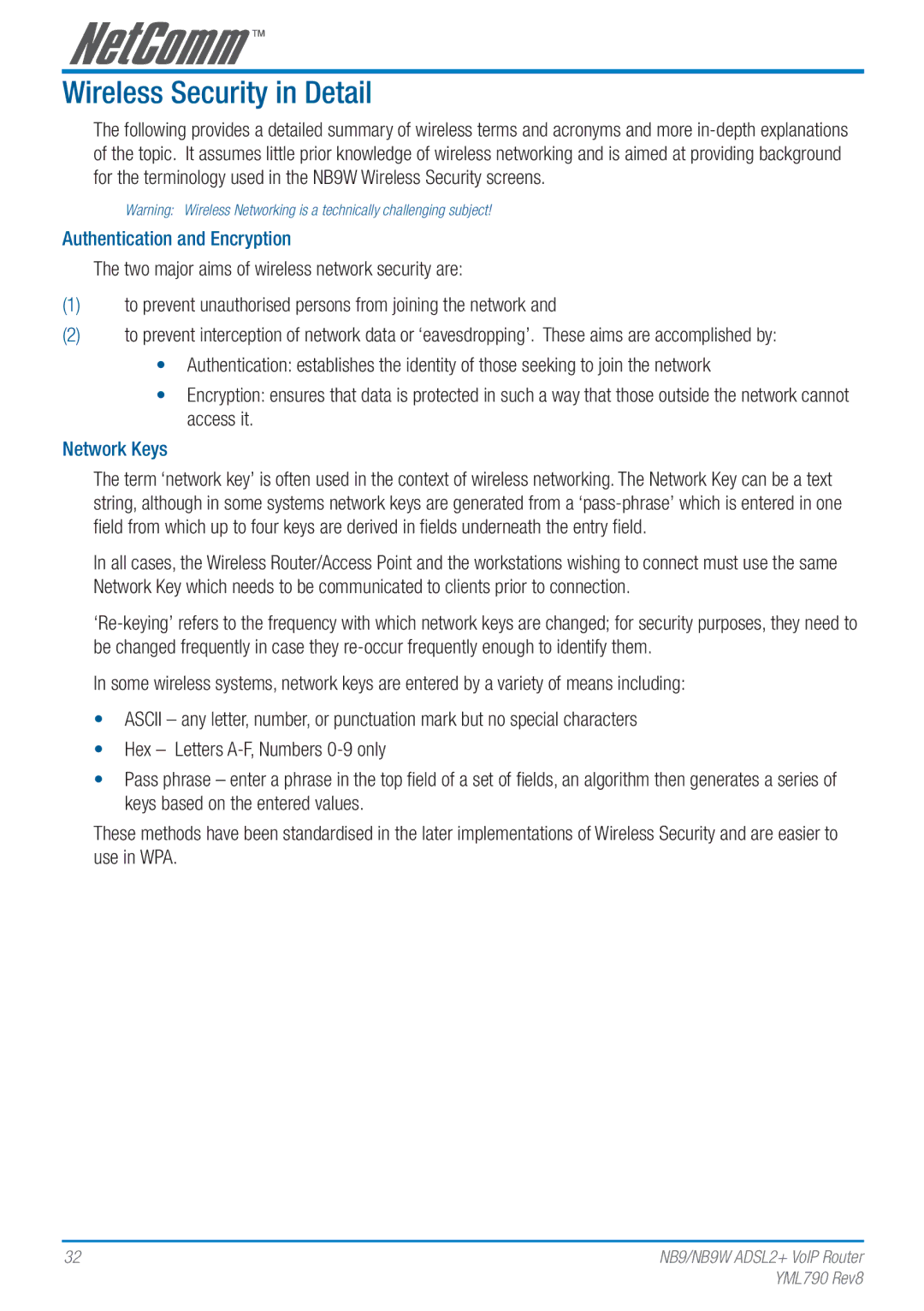
Wireless Security in Detail
The following provides a detailed summary of wireless terms and acronyms and more
Warning: Wireless Networking is a technically challenging subject!
Authentication and Encryption
The two major aims of wireless network security are:
(1)to prevent unauthorised persons from joining the network and
(2)to prevent interception of network data or ‘eavesdropping’. These aims are accomplished by:
•Authentication: establishes the identity of those seeking to join the network
•Encryption: ensures that data is protected in such a way that those outside the network cannot access it.
Network Keys
The term ‘network key’ is often used in the context of wireless networking. The Network Key can be a text string, although in some systems network keys are generated from a
In all cases, the Wireless Router/Access Point and the workstations wishing to connect must use the same Network Key which needs to be communicated to clients prior to connection.
In some wireless systems, network keys are entered by a variety of means including:
•ASCII – any letter, number, or punctuation mark but no special characters
•Hex – Letters
•Pass phrase – enter a phrase in the top field of a set of fields, an algorithm then generates a series of keys based on the entered values.
These methods have been standardised in the later implementations of Wireless Security and are easier to use in WPA.
32 | NB9/NB9W ADSL2+ VoIP Router |
| YML790 Rev8 |
